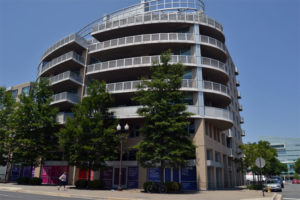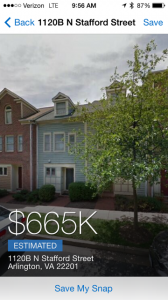
This regularly-scheduled sponsored Q&A column is written by Adam Gallegos of Arlington-based real estate firm Arbour Realty, voted one of Arlington Magazine’s Best Realtors of 2013 & 2014. Please submit your questions via email.
Q. My condo is considering a limit on the number of rentals in the building. We will basically have to get on a waiting list to rent out our condo if the max number of allowable rentals has been reached. Will this hurt our values?
A. I’ve personally been a victim of what can happen if the ratio of owner-occupied units to renter occupied units is not kept in check. I bought a condo in 2002 that I lived in for a while and eventually decided to rent out. A few years after moving out, mortgage interest rates dropped considerably and I tried to refinance the home. Even with over 30 percent equity and lender connections all over town, I could not find anyone who would refinance this home for me because the percentage of rented units exceeded 50 percent.
I had no choice but to stick with my original (more expensive) mortgage. Fast forward another few years and I decided to put the condo on the market. The first offer I received was from an investor who was planning to finance his purchase with 25 percent down. We quickly found out that he was not going to be able to buy in my building because the percentage of renters was still above 50 percent. This narrowed my pool of buyers to those who could pay cash or those who planned to occupy the unit as their primary residence and had financing that would look past the percentage of rented units.
To help answer your question, I reached out to mortgage expert Paul Nagel at First Home Mortgage. He had the following to say:
One little known role of the condominium developer and/or manager is to protect and ensure that as many financing options are available to potential buyers of any homes for sale in that condominium complex. More financing options available translates to more available buyers, which most likely translates to selling one’s condominium with less time on the market, and selling the home at a higher price as there will be more competition/buyers for each unit for sale.
Maintaining a proper budget, master insurance policy coverage, and sufficient emergency funds are examples of some of the criteria that Fannie Mae, Freddie Mac, FHA, the Veterans Administration, and many other loan programs require to be met as a condition for financing a home purchase in that condominium complex. If one of the criteria is not met, for example, a buyer may not be allowed to use an FHA loan to purchase a home in a given condominium complex.
One such criteria of almost all loan programs is that at least a majority of units must be “owner occupied” or, in other words, not rented to a tenant. Accordingly, a developer or condominium manager often works to limit the number of homes rented to tenants, so that the sales of units in that condominium complex are available to be financed by as many loan options as possible. Conversely, if the number of units rented is not regulated by the condominium manager, sometimes a “downward spiral” occurs, where unit owners cannot sell their units, so they rent the units, making it even harder to get financing for home sales in that unit, resulting in even more units being rented.
Getting back to your question, I think Paul and I agree that proactively limiting the number of rentals in a condominium complex is good for the long-term value of your home. I say this even though it may discourage potential investors from purchasing in your building. You will be protecting mortgage options for those who want to refinance or purchase. You will also be attracting occupants who have a vested interest in maintaining the condominium.
I know there are some people who feel as though their condominium is better off without such limits. I hope you will share your opinions and reasoning in comments.
The views and opinions expressed in the column are those of the author and do not necessarily reflect the views of ARLnow.com.



